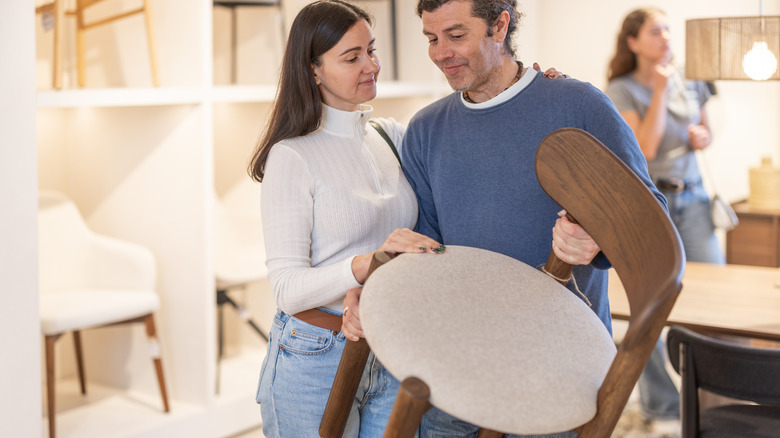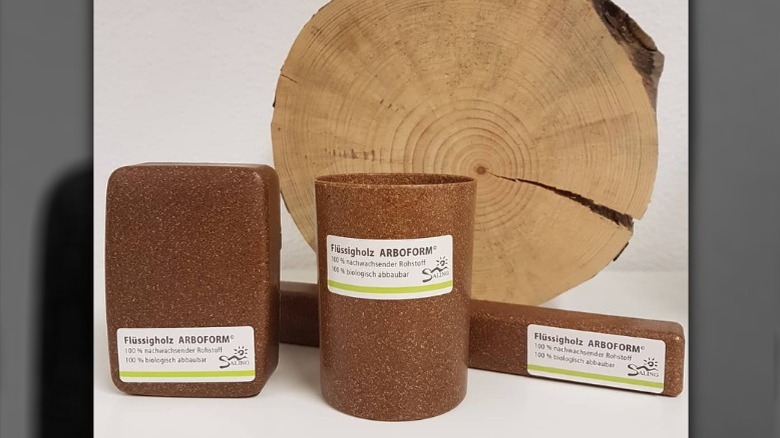Ditch The Plastic — Is Liquid Wood The Next Trend In Sustainable Home Furniture?
There's always something new in the world of interior design, and with sustainability gaining traction, there's one material that seems to be on its way to becoming the next big thing: liquid wood, also known as Arboform. Despite what the name implies, the wood is not a liquid — at least not in its final form. Liquid wood is a bioplastic composite made of lignin, cellulose, and natural wax with flax, hemp, or sisal as fillers. Lignin is a natural polymer that makes plants rigid and woody. Interestingly, it is the second most abundant natural polymer after cellulose. This substance is often produced as a byproduct of pulping in the paper industry. To make liquid wood, lignin is mixed with natural fibers and binding agents like wax or resin. The result is a material that looks and even smells like wood. Physically, liquid wood behaves remarkably like plastic; it melts when heated and hardens when cooled. Unlike plastic, however, it is made of 100% biodegradable ingredients instead of petroleum.
In its liquid state, Arboform can be injection-molded to create various pieces of furniture and decor. This makes it just as versatile as plastic without all the toxicity. Of course, liquid wood should not to be confused with products like Retique It Liquid Wood, a wood-based coating that is used to give plastic or laminate furniture as well as vinyl or laminate flooring a real wood finish. Arboform, on the other hand, is shaped into furniture itself. Many people are hunting for more ways to incorporate sustainable wood material everywhere in their home, so it's only a matter of time until liquid wood starts trending as a practical and eco-conscious choice for furniture.
Liquid wood is a versatile material with some drawbacks
Much like any other furniture and decor material, liquid wood has its pros and cons. Arguably, it's biggest advantage is that it's completely plant-based and doesn't rely on non-renewable resources like petroleum. Besides being eco-friendly and biodegradable, it is also heat-resistant. Its ability to withstand higher temperatures than thermoplastics makes it more versatile than plastic when it comes to creating decorative elements. Plus, it can be made to mimic the look and texture of actual wood, so it's a warm trend that will never go out of style, perfect for adding visual interest and a natural feel. Liquid wood is highly customizable, too; you can dye lignin in various shades and blend it with different natural fibers like jute, hemp, and rattan. As a result, you have a piece of furniture that's not only practical but also aesthetic.
However, processing liquid wood requires high levels of heat and pressure. This means a lot of energy goes into producing this composite. While the material itself is eco-friendly, the manufacturing process does leave behind a carbon footprint. Another downside is that, despite being rigid, liquid wood furniture can be somewhat brittle. In other words, it's not ideal for heavy load-bearing parts like table legs — although you can use it for chair seats, armrests, and tabletops, as well as various decor pieces. Arboform can also be expensive, with a wholesale price of around $1.60 per pound. Even with these drawbacks, it's surprising that the liquid wood trend hasn't taken off sooner because the pros still outweigh the cons. Yes, it takes a lot of energy to produce, but so does plastic — and at least liquid wood biodegrades in just 120 days, whereas plastic stays in landfills and oceans for decades, if not centuries.

